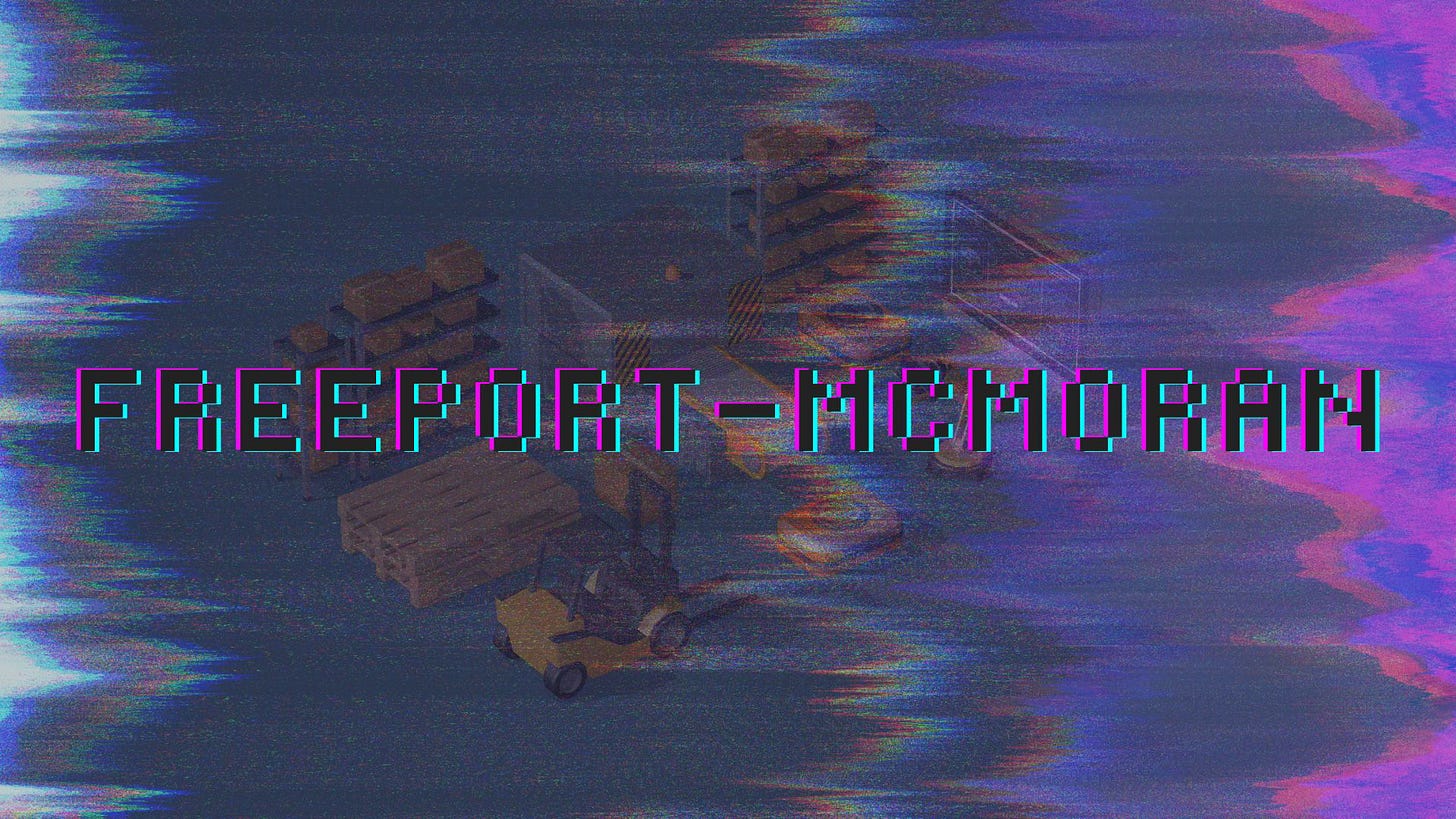Freeport-McMoRan AI Supply Chain Audit
Supply Chain Position: Mining | Date of Report: November 7, 2024
1. Executive Summary
This report examines Freeport-McMoRan Inc.'s role in supporting AI infrastructure through its production of essential minerals, particularly copper and molybdenum. Freeport-McMoRan, a major U.S.-based mining company, is one of the largest producers of copper globally, a mineral critical for AI hardware, including data centers, processors, electric vehicles, and renewable energy systems. The demand for AI and high-performance computing infrastructure is driving increased demand for copper, essential for electronic conductivity and heat management in AI hardware. This report evaluates Freeport-McMoRan’s operational capabilities, supply chain dependencies, and the challenges associated with meeting the AI sector’s expanding need for reliable mineral supplies.
2. Financial and Technological Overview
Freeport-McMoRan is financially stable and highly focused on copper production, with substantial mining operations in North and South America and Indonesia. Copper accounts for a significant portion of Freeport’s revenue and is essential for semiconductors, connectors, and cooling systems within AI infrastructure. Molybdenum, a byproduct of copper mining, is also valuable for its strength and temperature-resistance properties, which are useful in certain electronic and structural applications. Freeport’s large-scale operations allow it to serve a critical role in the supply chain for AI hardware, though it faces regulatory, environmental, and geopolitical challenges, particularly in Indonesia.
Score: 86/100
3. AI-Critical Mineral Supply Chain Components
3.1 Copper
Description: Copper is indispensable for AI infrastructure due to its conductivity, durability, and thermal management properties. It is used extensively in processors, data centers, and other electronic components.
Mining Locations: Freeport’s primary copper mining assets include the Grasberg mine in Indonesia and operations in the United States (Arizona and New Mexico) and South America (Peru).
Challenges: Copper mining is water- and energy-intensive, raising concerns over environmental impact and regulatory compliance. In Indonesia, Freeport faces challenges related to local regulations, community relations, and government ownership requirements, which could impact production stability.
3.2 Molybdenum
Description: Molybdenum, often a byproduct of copper mining, is used in high-temperature applications and alloying, enhancing the durability of electronic components and structural supports in AI and data center infrastructure.
Mining Locations: Freeport produces molybdenum primarily from its U.S. operations, including mines in Colorado, and as a byproduct from its copper mines.
Challenges: Molybdenum production is closely linked to copper mining output, meaning supply can fluctuate based on copper demand. Additionally, molybdenum markets are smaller and more volatile, making price stability a potential issue.
Score: 84/100
4. Supply Chain Mapping
Freeport-McMoRan’s copper and molybdenum operations are geographically distributed, with significant production in Indonesia, the United States, and South America. The Grasberg mine in Indonesia is among the world’s largest copper and gold deposits, though it comes with regional political complexities. In the U.S., Freeport’s Arizona and New Mexico operations form the core of its North American copper production. This geographic spread provides some resilience but also introduces regulatory, logistical, and operational challenges. The Indonesian government’s partial ownership of Grasberg increases regional complexity, while U.S. and South American operations face regulatory pressures related to environmental standards and resource usage.
Score: 78/100
5. Key Technologies and Innovations
Freeport-McMoRan has made significant investments in operational technologies, including automation, predictive maintenance, and energy efficiency improvements, particularly at its large-scale copper mining sites. The company employs digital monitoring and data-driven optimization to increase operational efficiency and reduce environmental impact. Freeport has also been exploring methods to improve water management and energy usage to meet increasing environmental standards. However, Freeport’s adoption of sustainable mining technologies is ongoing, and additional investment may be required to align fully with the environmental expectations of the AI and tech industries.
Score: 82/100
6. Challenges and Risks
Geopolitical and Regulatory Risks
Freeport’s Grasberg mine in Indonesia is subject to local government ownership requirements, taxes, and export quotas, which introduce risks of operational disruptions and regulatory changes. In the U.S., Freeport faces environmental regulations related to water use, land restoration, and emissions, which could impact production costs.
Environmental and Sustainability Pressures
Copper mining is highly resource-intensive, with significant environmental impacts on water usage, land, and energy consumption. Freeport faces pressure to reduce its environmental footprint, particularly at its larger operations, and to adopt sustainable practices that address community concerns and environmental expectations in the tech industry.
Supply Chain Vulnerability and Resource Scarcity
As global demand for copper grows, driven by AI infrastructure, EVs, and renewable energy, Freeport’s copper supply chain may face constraints. Any disruptions in copper availability or price volatility could impact Freeport’s ability to meet supply commitments and fulfill the increasing demand from AI and high-performance computing markets.
Community and Social License to Operate
Freeport’s mining operations, particularly in Indonesia and South America, are exposed to social challenges, including community relations, labor conditions, and environmental concerns. Maintaining a social license to operate is critical, as local opposition or regulatory changes could impact production continuity.
Operational and Logistical Dependencies
Freeport’s reliance on specific transport routes and port facilities, especially for exporting copper from Indonesia, creates logistical risks. Infrastructure issues or regulatory changes affecting export permits could disrupt Freeport’s supply chain and delay deliveries to AI hardware manufacturers.
Score: 74/100
7. Conclusion
Freeport-McMoRan plays a vital role in supplying copper and molybdenum, both critical to AI infrastructure, supporting data center construction, semiconductor production, and electronic components. The company’s expansive mining operations and investments in operational technology and sustainability improve its position in the growing AI hardware market. However, Freeport faces challenges related to regulatory pressures, environmental sustainability, and regional dependencies, particularly in Indonesia. Maintaining a stable supply of copper for AI applications will require Freeport to manage environmental impact, navigate regional regulations, and strengthen community relations to secure a social license to operate in key areas.
Final Risk Score and Categorization
Financial and Technological Overview: 86/100
AI-Critical Mineral Supply Chain Components: 84/100
Supply Chain Mapping: 78/100
Key Technologies and Innovations: 82/100
Challenges and Risks: 74/100
Final Risk Score: 81/100
Risk Category: Low Risk


